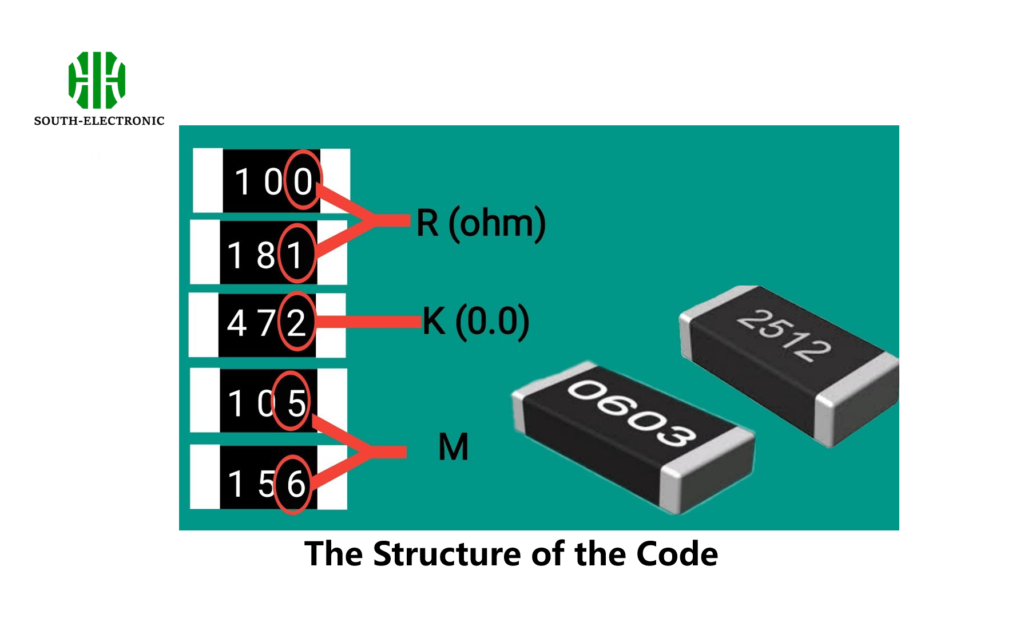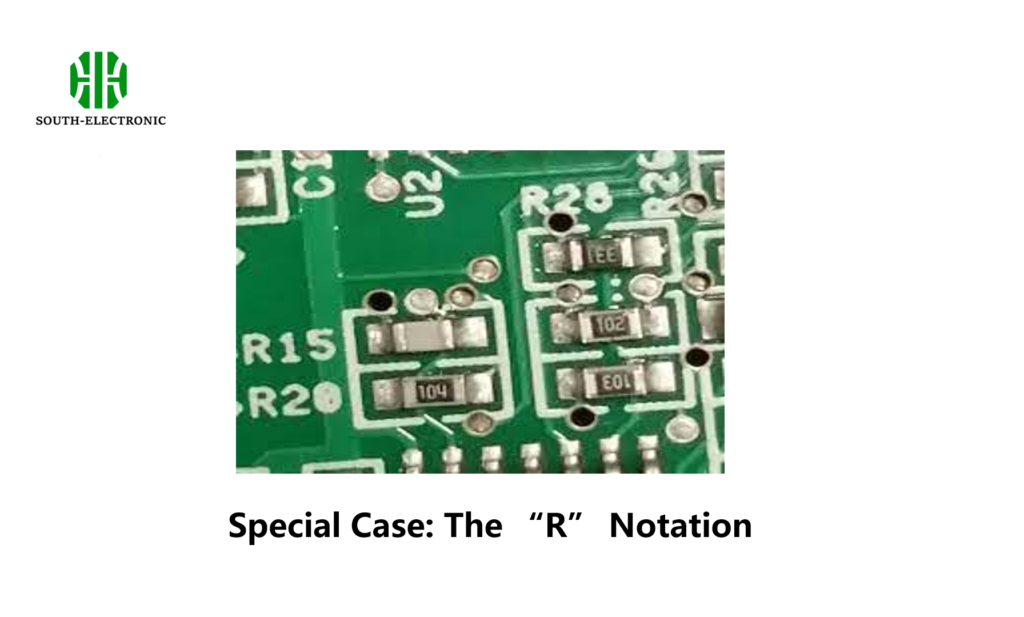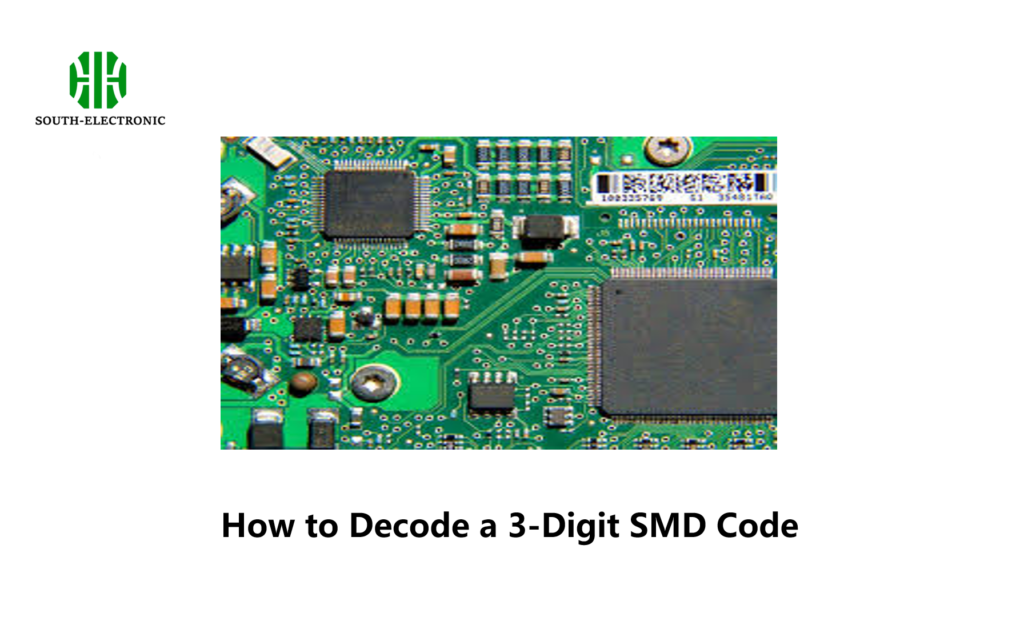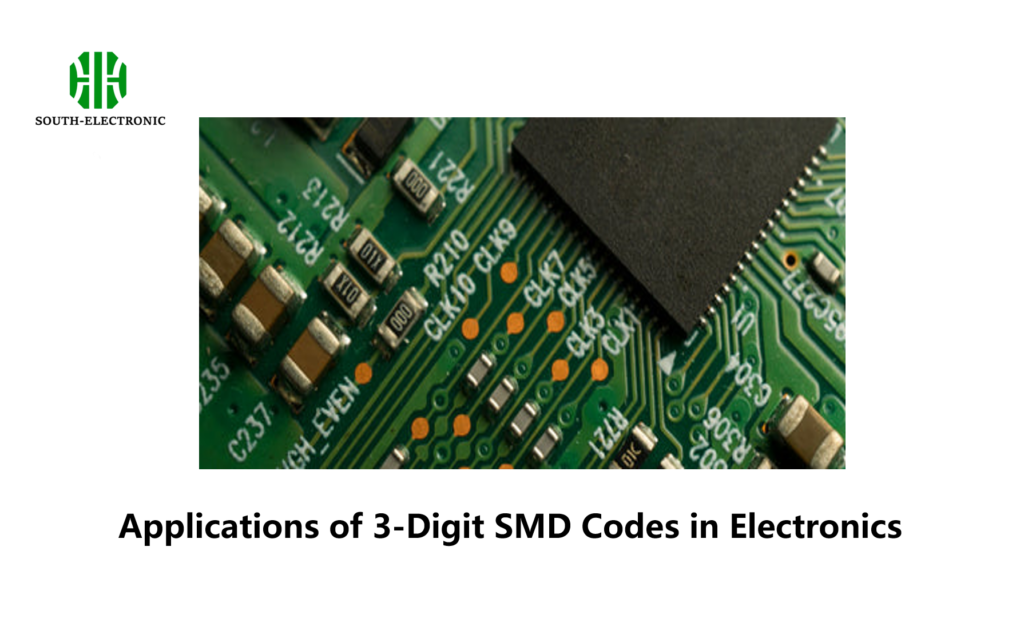What is the 3-Digit SMD Code?
The 3-digit SMD code is a simple yet powerful tool used to identify the resistance values of small resistors in electronic circuits. These codes consist of three characters, usually numeric, which represent the resistance in ohms. The system is designed to be space-efficient and easy to interpret, making it ideal for use in compact electronic devices.
The Structure of the Code
The 3-digit SMD code follows a straightforward structure:
- First Two Digits: These represent the significant figures of the resistor's value.
- Third Digit: This is the multiplier, which tells you how many zeros to add to the significant figures.
For example, in the code “472”:
- 47 are the significant figures.
- 2 indicates that two zeros should be added, making the resistance 4700 ohms (4.7 kΩ).

Special Case: The “R” Notation
Sometimes, an “R” is used in the 3-digit code to indicate where the decimal point goes. For example, “4R7” means 4.7 ohms, and “R47” means 0.47 ohms. This is especially useful for very low resistance values.
Common 3-Digit SMD Codes and Their Corresponding Resistances
| SMD Code | Resistance (Ohms) |
|---|---|
| 100 | 10 |
| 101 | 100 |
| 472 | 4700 |
| 4R7 | 4.7 |
| 000 | 0 (Zero Ohm Resistor) |

How to Decode a 3-Digit SMD Code
Decoding a 3-digit SMD code is straightforward once you know the structure:
- Identify the Significant Figures: The first two digits give you the base value.
- Determine the Multiplier: The third digit tells you how many zeros to add.
- Apply the “R” Rule: If an “R” is present, it represents a decimal point.
For example, “102” would be decoded as 1000 ohms (1 kΩ), while “4R7” would be 4.7 ohms.
Let’s consider a practical example:
- SMD Code: “103”
- Decoding:
- Significant figures = 10
- Multiplier = 3 (which means adding three zeros)
- Result = 10,000 ohms (10 kΩ)
Such a resistor might be used in a voltage divider circuit in a smartphone’s power management system.

Applications of 3-Digit SMD Codes in Electronics
High-Density Circuit Design
One of the main uses of the 3-digit SMD code is in high-density circuit design. In devices like smartphones, laptops, and other compact electronics, space is at a premium. The small size of SMD resistors, combined with their easy-to-read codes, allows engineers to pack more functionality into smaller spaces without sacrificing performance.
Sample Applications of SMD Resistors
| Device Type | SMD Code | Resistance Value | Application Example |
|---|---|---|---|
| Smartphone | 103 | 10,000 ohms | Power management circuits |
| Laptop | 472 | 4700 ohms | Signal filtering and smoothing |
| Consumer LED | 101 | 100 ohms | Current limiting in LED circuits |
| Medical Device | 332 | 3300 ohms | Sensor interfacing |

Tolerances and Accuracy
The three-digit code tells you the resistance value, but you also need to know the tolerance, which is how much the actual resistance can vary from the stated value. Tolerances are usually marked with additional characters or color codes. For standard SMD resistors, a tolerance of ±5% is common, but you can get resistors with tighter tolerances for precision applications.
Challenges and Considerations
Reading SMD Codes on Small Components
One of the challenges with SMD codes is that they can be hard to read because the components are so small. Over time, the codes can wear off, or be covered up by soldering, making it hard to figure out what the resistor’s value is.
Tips for Accurate Reading
- Use a Magnifying Glass or Microscope: For tiny components, a magnifying tool is essential for accurately reading the codes.
- Cross-Check with a Multimeter: If there’s any doubt, verify the resistance with a multimeter.
- Reference Online Calculators: Many websites and apps offer quick decoding tools for SMD codes, which can be a handy resource.



